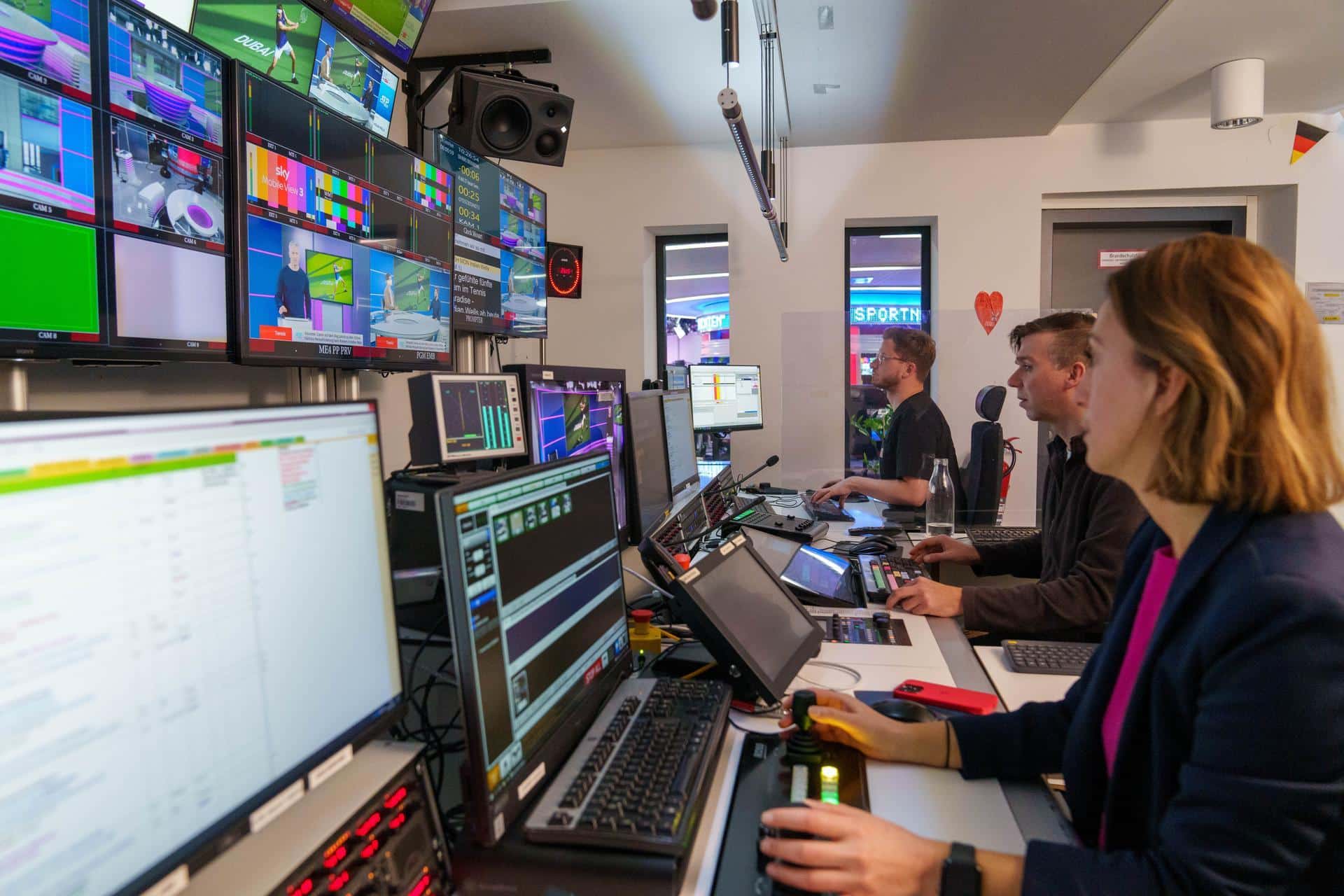The way audiences consume sport is changing faster than many broadcasters can keep up. Technology has given broadcasters more flexibility and control than ever before but has also produced significant challenges.
Here, we assess the technology that’s changing the game and what you can do to keep up as sports broadcasting transforms.

How Technology has Changed the Viewing Habits of Sport fans
Streaming
Viewing sport on streaming platforms has surged from 39% in 2019 to 75% today, while social media viewership has risen from 44% to 64%, mainly among younger audiences.
The Attention Economy
Sports broadcasters must now compete with multiple forms of digital media for their viewers’ attention — competition nonexistent a few decades ago.
Second screens
Second screen use is up, with 70% of fans (78% Gen Z, 74% Millennials) using smartphones to view live sport, often simultaneously engaging other platforms or content.
Interactive Storytelling
Technological advancements like real-time data and analytics, Virtual Reality (VR) / Augmented Reality (AR), live chats, and feeds of user-generated content are becoming the norm, driven by the growth of esports streaming and multiplayer online gaming.
Four ways you can use current technology to enhance sports storytelling:
1. Integrate Real-Time Data and Analytics
Modern audiences want to see real-time data and analytics displayed on-screen as the action is happening.
Tools like XPression make bringing data to life easy through powerful graphics and automated workflows. These ensure consistency and accuracy, allowing Directors to use real-time data to enhance the narrative without increasing the burden on operators.

2. Incorporate Virtual and Augmented Reality
A 2022 survey found that 21% of UK respondents would watch live games in virtual reality, while 30% would watch live games in a virtual representation of their favourite stadium or arena. Meta has heavily invested in VR, most notably with its acquisition of Oculus, aiming to develop immersive virtual experiences. This, coupled with Apple’s recent launch of the Vision Pro is likely to drive mainstream adoption of AR over the next decade – it’s technology that cannot be ignored.
These strategic moves by industry giants have set the stage for a new era of media consumption, where physical and digital realities converge – and present opportunities for more immersive, more engaging sports storytelling.
3. Capturing Unique Shots with the Latest Camera Systems
Audiences increasingly expect video game-style dynamics in live sports broadcasts, thanks to the growing popularity of streaming and esports. For example, “game mode” or the railcam view made its way into football broadcasts, driven largely by younger audiences who have grown up seeing it in the popular FIFA and Pro Evolution Soccer (PES) video games.
Multi-camera views can also convey the emotion of a live event by telling both parts of the story — the delight and the sadness — simultaneously, alleviating the Director’s classic dilemma of missing a moment.
Innovative camera systems like spidercam and Furio give sports broadcasters another opportunity: the ability to create repeatable, consistent, dynamic shots that capture the energy, in pre-determined moments that make sport so enjoyable to watch.
Robotic systems can follow pre-programmed movements or be automated to follow motion on the field. For example, robotics can follow individual players and hit predetermined cues with greater accuracy and reliability than a human operator alone. That leaves human operators more time and flexibility to capture the full energy of spontaneous moments that a computer simply could not.
4. Streamline Storytelling with Automated Production Workflows
Automated production workflows alleviate repetitive creative work, like colour correction, graphics editing, media storage and delivery, and most studio equipment movements. That frees operators and creatives to do more in less time, helping broadcasters meet the ever-growing demands of viewers without the additional time and resources it would have taken a decade ago.

Definitive Guide to the Modern Sports Viewer
Sports fans expect more—can your broadcast keep up?
Stay ahead with Ross Video’s Definitive Guide to the Modern Sports Viewer—your go-to resource for the latest trends in fan engagement, production innovation, and sports viewership shifts.
This is Ross Video’s full-stack broadcast automation solution:
- Media I/O. This capture and playout solution uses workflow automation to transcode live video, monitor performance, and communicate with third-party systems.
- XPression. This comprehensive graphics tool is powered by automation to transform data into polished real-time graphics using templates and user-friendly creative tools.
- OverDrive. As an Automation Production Control (APC) system, OverDrive is all about automation. Almost everything, from audio mixing to robotic cameras and pedestal movements, can be automated using OverDrive and its partner control panel software, DashBoard.
- Streamline Pro. Streamline automatically and seamlessly moves content between tools and systems, accelerating content production and ensuring consistent high-quality between internal and external production units.